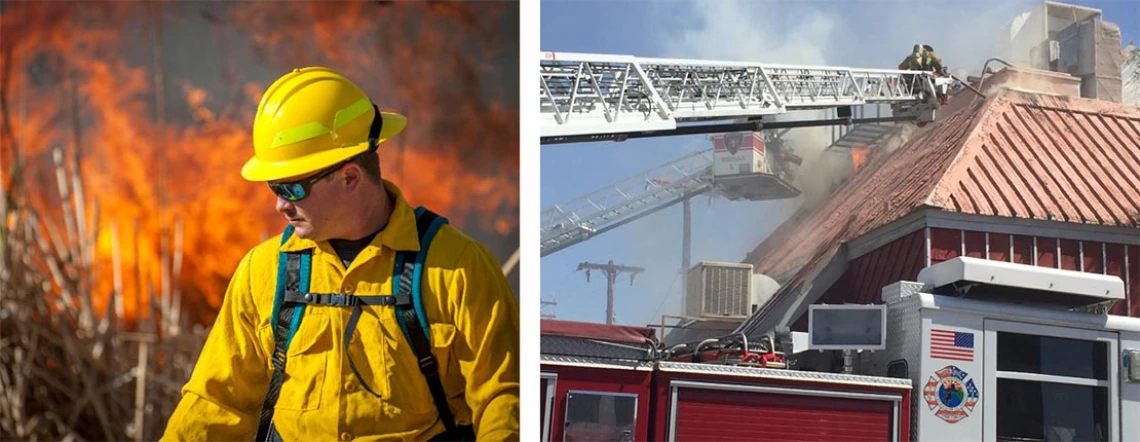UA Researchers Help Firefighters Stay Healthy

Long after a blaze has gone cold, firefighters still face dangers to their physical and mental health. From PTSD to heightened risks of cancer and suicide, first responders can pay a high price for protecting us all. But a collaboration between the University of Arizona and Tucson Fire Department is helping reduce those costs.
The university is committed to improving the lives of first responders, says Jeff Burgess, associate dean for research at the UA’s Mel and Enid Zuckerman College of Public Health. “We’re doing things that will be models for fire departments across the country.”
Those models include research helping fire crews avoid toxin exposure. Peer-to-peer support aids firefighters struggling with the mental toll of their work. The project seeks to halt the spread of dangerous pathogens through the firehouse.
The work got a boost in 2015 when the UA received a $1.5 million grant from the Federal Emergency Management Agency to help improve fire department safety in Tucson. A subsequent FEMA grant expanded that effort to fire departments across the country.
The project began on a bittersweet note. In 2014, Tucson arson investigator Tom Quesnel died of leukemia, likely caused by his work. His death prompted a reexamination of the department’s safety regimen — and a desire to understand why firefighters die from cancer at rates 14% higher than the general public.

The UA’s research has revealed how toxic burned material like asbestos and wood laminates can be, even after a fire is out, showing how those toxins can be inhaled or absorbed through the skin. These findings led to policy changes requiring that all personnel, including investigators like Quesnel, wear respirators and other protective gear at fire scenes.
The department also introduced the “clean cab” concept, which keeps contaminated firefighting equipment out of fire truck cabs, encourages the use of wipes to clean exposed skin, and promotes routinely swapping contaminated hoods for clean ones.
Follow-up testing showed an immediate drop in toxins entering the bodies of firefighters.
Still, learning new habits, such as cleaning gear after a fire, has been a challenge for weary fire crews, Tucson Fire Department Captain John Gulotta acknowledges. “A lot of times our guys had been working all night and just wanted to get to get their gear off,” he says.
And more obstacles remain; although the reforms resulted in significantly lower contaminant levels, crew members are still absorbing some toxins. “I don’t know if we’ll ever get to zero,” Gulotta says. “But what we can do is find a whole bunch of little things to change.”
Reducing toxic exposure isn’t the only benefit from the UA/Tucson Fire collaboration. Kelly Reynolds, chair of the College of Public Health’s Department of Community, Environment and Policy, addressed the fire department’s problem with firehouse MRSA staph infections by advising that carpeting be replaced with easier-to-sanitize hard surfaces.
And Patricia Haynes, in the college’s Health Promotion Sciences Department, has introduced cognitive therapy to help firefighters cope with the stress of 24-hour shifts, where sleep patterns are constantly disrupted by late-night emergencies. She also created an outreach protocol that has firefighters initiating conversations with colleagues facing professional or personal difficulties.
That peer-to peer contact is critical, says Darin Wallentine, Tucson Fire’s deputy chief of health and wellness. “Individuals are more likely to respond to one of their peers when they need help,” he says.
Haynes also helped implement a program where firefighters can temporarily go on a lighter schedule to deal with problems. “They are subject to chronic stress,” she says. “This policy allows them to reset and work on some of these issues, so that they can get back out in the field.”
It’s just one more perk from the partnership between the university and Tucson’s first responders. “This collaboration is such a big thing,” says Gulotta. “I don’t know how we’d do it if the UA was not so generous in reaching out to us. They are making a huge difference.”
